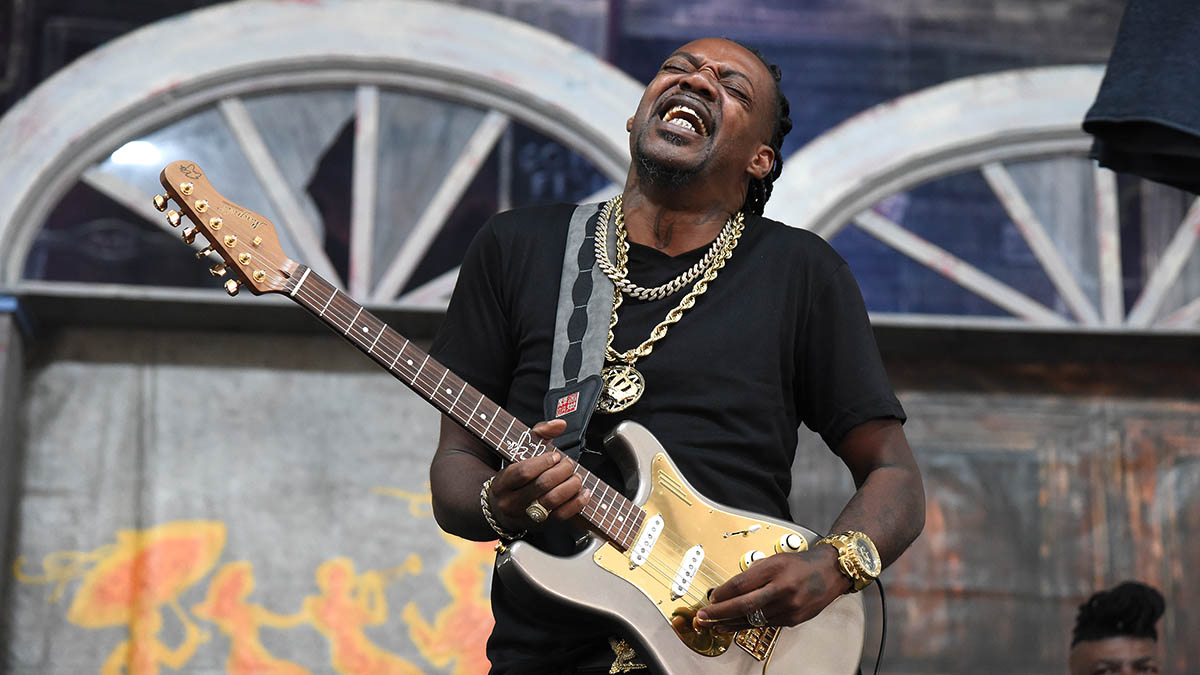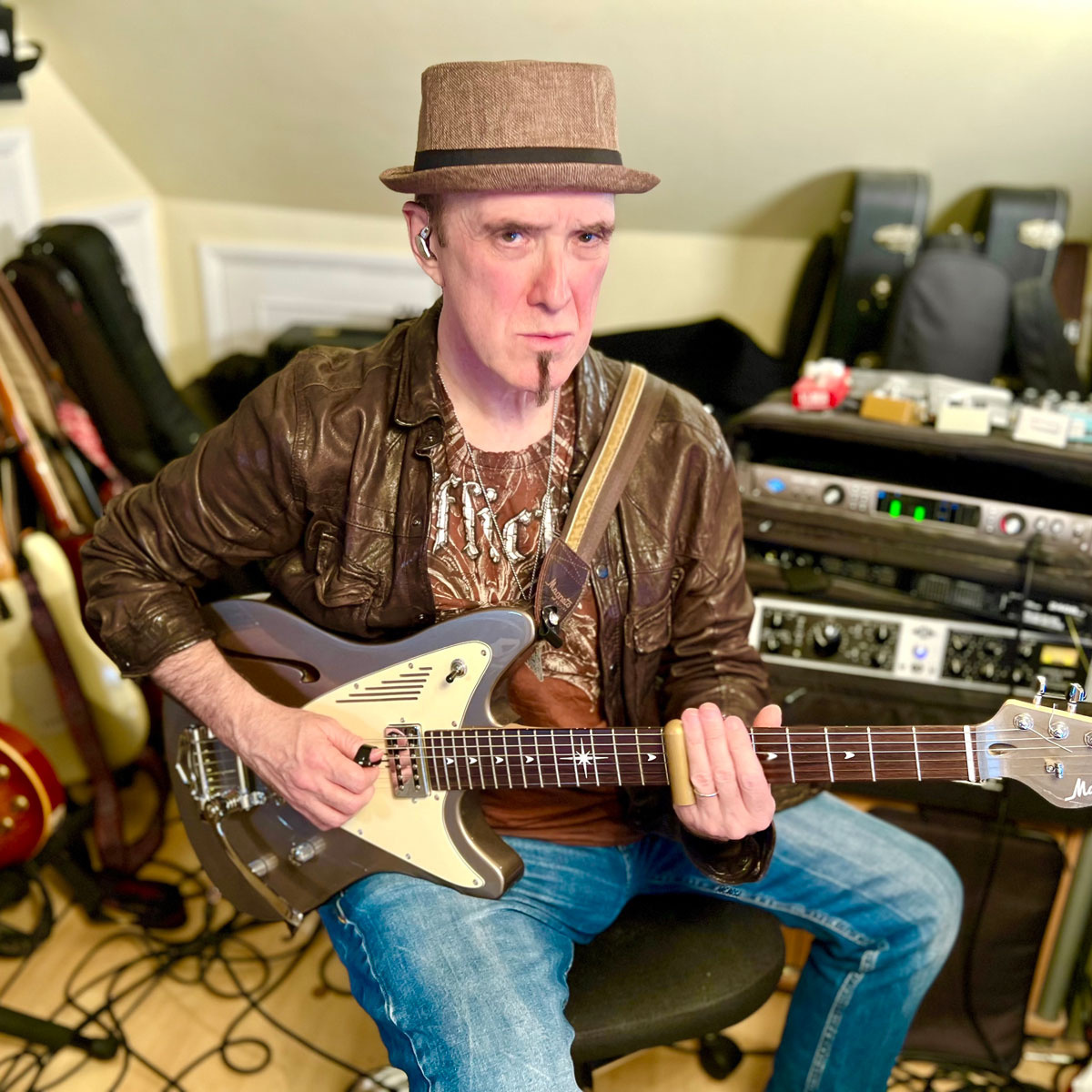He’s considered one of the top blues guitarists in the world, but nobody plays pentatonics like Eric Gales – learn his tastiest licks
Get to grips with the extraordinary, topsy-turvy playing style of one of the greats of modern blues-rock guitar – the player who Joe Bonamassa and many more have called the greatest

Eric Gales has worked his way to the top of the crop of current blues players, having started out as something of a prodigy, playing a Hendrix-infused style of modern blues. Eric seamlessly fuses classic blues language and a more modern style that owes some of its character to the influence of Eric Johnson. Gales often covers rock classic in his live sets from Don’t Fear The Reaper to Led Zeppelin’s Kashmir.
His virtuoso take on the blues has won him mainstream acclaim in addition to the respect of the blues community. His albums reflect his wide-ranging taste and experience in many genres, taking in soul-inspired chords and metal-style riffs.
There are quite a few elements that stand out in Eric’s playing. His technique is impressive to say the least, playing both left-handed and his guitar strung upside-down. The Eric Johnson influence can be seen in the position shifting of the minor pentatonic scale and in the economy-picked lines.
Hendrix-like wide bends and lyrical free-flowing improvisation are also a big part of his playing. He loves to target more unusual notes, often embellishing minor pentatonic patterns by filling in the gaps between the five notes. The major 2nd/9th interval is important in his playing, as it adds a more open, modern sound. Eric also seems to have an ear for jazz influenced lines and often incorporates chromatic notes into familiar blues licks and patterns.
In our examples I’ve added some of the types of pentatonic and blues lines that are common in Eric’s playing. The ability to flow between the positions of the pentatonic scales are key to this style. This presupposes a command of the shapes that span the entire fretboard. It’s worth brushing up on your pentatonic shapes, and also practising moving from one scale position to another.
I’ve also mixed legato and non-legato approaches. By legato I mean lines that use hammer-ons, pull-offs, slides and bends. In the non-legato passages, I’d encourage you to consider exploring economy picking.
This is where we follow the guitar pick through in the same direction when moving from one string to another. So, rather than moving from an upstroke to a downstroke or vice versa, try playing both notes with the same pick stroke. It works with downstrokes and upstrokes.
One thing to be mindful of with this approach is that you’ll have to pre-plan your picking patterns until you have a few economy picking licks up your sleeve. After this it should become second nature.
Get the tone
Amp Settings: Gain 7, Bass 5, Middle 4, Treble 6, Reverb 4
To approximate Gales’ sound you’ll need a high-gain smooth American-style amp tone. Reverb is essential, and some delay will help too. You’ll also need a decent overdrive pedal. Eric’s sound is inspired by classic and modern guitar tones from Albert King to Eric Johnson. While I didn’t use one here, Eric is also a master of the wah-wah, so try that too if you like.
Example 1. Hendrix-inspired riff
Our first example is a classic Hendrix-inspired riff which uses the open sixth string E note to give a sense of the underlying chord – look where it’s placed each time.
Example 2. Shifting minor pentatonic positions
This example uses economy picking to cross the strings. Find your own way to execute this line, but don’t let the pick change angle or position in your hand.
Example 3. Adding the 9th to the blues scale
Here’s a classic line that adds the 9th (F#) to the E blues scale (E-F#-G-A-Bb-B-D). Again, we’re position shifting. I started on an upstroke – see if this works for you.
Example 4. Pentatonic blues line with 9th and bends
Here we see a more traditional minor pentatonic/blues line, and again we’re leaning on the 9th degree. This line incorporates a few more bends, too.
Example 5. Eric Gales-style solo
Our sample solo mixes up many of the above ideas, but we’ve added a few more complicated rhythms. If you have problems figuring them out from the tab, check the audio. Inject as much EG-style intensity as you can, while endeavouring to stay in time and with accurate bends and clean legato.
Get The Pick Newsletter
All the latest guitar news, interviews, lessons, reviews, deals and more, direct to your inbox!
A professional guitarist for many years, Andy G Jones has played with Van Morrison, James Ingram, Lamont Dozier, Queen (Brian May and Roger Taylor), Robben Ford, Billy Cobham, John Illsley (Dire Straits), KT Tunstall, Albert Lee (featured on Andy's upcoming CD), Mike Finnigan, Dave Landreth and Ryan Voth from The Bros. Landreth, Malford Milligan, The BBC Radio Big Band, Patti Austin, Hamish Stuart (Average White Band), Lalo Schifrin (Hollywood film composer Bullitt, Mission Impossible), Hank Marvin, James Dean Bradfield (the Manic Street Preachers), Grady Tate, Agnetha from ABBA, Cliff Richard, Dudley Moore, Nathan James (Inglorious), Joey Tempest (Europe) and Kelsey Grammar.
“There are so many sounds to be discovered when you get away from using a pick”: Jared James Nichols shows you how to add “snap, crackle and pop” to your playing with banjo rolls and string snaps
Don't let chord inversions bamboozle you. It's simply the case of shuffling the notes around










![Joe Bonamassa [left] wears a deep blue suit and polka-dotted shirt and plays his green refin Strat; the late Irish blues legend Rory Gallagher [right] screams and inflicts some punishment on his heavily worn number one Stratocaster.](https://cdn.mos.cms.futurecdn.net/cw28h7UBcTVfTLs7p7eiLe.jpg)


